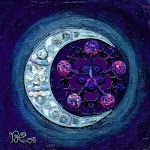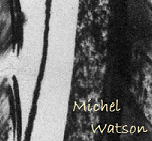In England, the Autumn Equinox was known as the feast Harvest Home, in Ireland is it known as Michaelmas. In West Scotland, Cornwall and Ireland, people visited burial mounds. It is believed that Mabon was a time when wands were harvested by druids. Elsewhere in the world, grapes were harvested and wine was drunk in celebration of the holiday. Regardless of location, the Autumn Equinox is a day for harvest and preparation for colder months ahead as well as a time to give thanks for all that has been collected.
The name Mabon was given to this holiday by Aidan Kelly around 1971, and since then many Pagans and witches have embraced it. Mabon is a Welsh God of Harvest, whose tale is featured in the Medieval Welsh book the Mabinogion. The Mabinogion manuscripts date to the 14th century; however, “The Tale of Culhwch and Olwen” where Mabon’s story is told, could possibly date to the 11th century. Mabon’s mother, Modron, is an early Mother Goddess and Mabon is known as her divine son. In “The Tale of Culhwch and Olwen,” Mabon is abducted from his mother when he is three days old. It is Culhwch and his first cousin King Arthur who rescue Mabon from this imprisonment. Mabon then helps the two heroes hunt the magical boar Twrch Trwyth, thus confirming his role as hunter.
On Mabon, many Pagans like to gather for a Thanksgiving-like feast. For some, rituals of abundance and gratitude are performed, while others use magick to bring in more success and growth. Keeping the theme of harvest in mind, ask yourself: what has blossomed and grown over the last year? Have you had successful projects completed? What goals have you completed? Pause for some time to thank the Gods and Goddesses for all the growth and prosperity in your life.

Works Cited
Green, Miranda. Dictionary of Celtic Myth and Legend. London: Thames & Hudson,
1992.
McCoy, Edain. Sabbats- A Witches Approach to Living the Old Ways. Woodbury, MN:
Llewellyn, 2004.
The Mabinogion, trans. Gwyn Jones and Thomas Jones. London: Everyman Library,
1993.
Zell-Ravenheart, Oberon. “Summer’s End.” Llewellyn’s Sabbats Almanac: Samhain
2009 to Mabon 2010. Woodbury, MN: Llewellyn, 2009.
Please visit Kiki's Cauldron for more information on Mabon correspondences. How do you plan to spend Mabon. Thanks for reading, and many blessings!























































Thank you for the great article, and THANK YOU for being the kind of person who actually does research and posts sources! lol
ReplyDelete